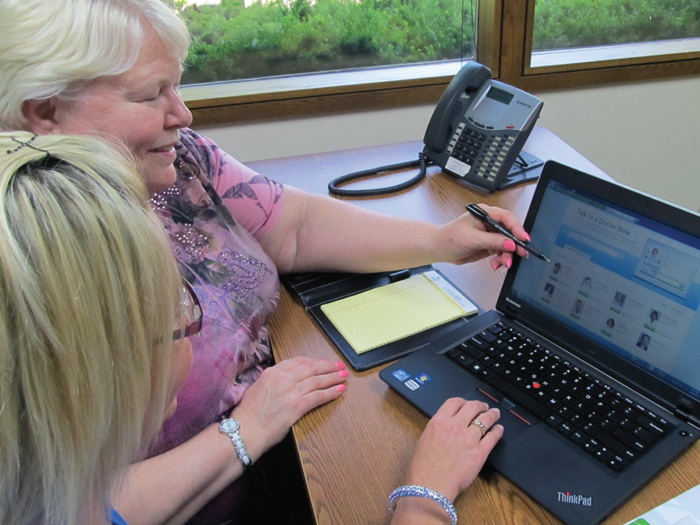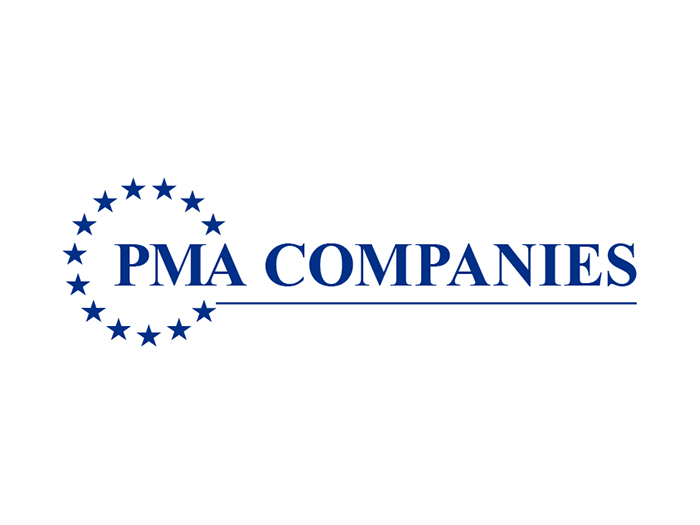Employee Benefits
The Doctor Is ‘On’

Truth Hardware’s first foray into telehealth began nearly five years ago.
In January 2009, the company implemented a hotline that made nurses available to provide medical advice to the organization’s approximately 560 employees via telephone, and Truth had high hopes for the new service.
“We thought it would be a good benefit,” said Mona Edgar, benefits administrator with the Owatanna, Minn.-based manufacturer of door and window hardware. “But employees didn’t utilize it that much.”
It wasn’t that the qualified and helpful nurses on the line couldn’t offer good advice, she quickly added. They could.
Workers, however, still had to seek out additional consultation with physicians in order to receive diagnoses, fill prescriptions or initiate treatment, for example. Employee response to the hotline was lukewarm, and the service was dropped in 2011.
The following year, Independence Blue Cross Blue Shield of Minnesota — Truth’s benefits plan administrator — approached Edgar and company to discuss its Online Care Anywhere program.
Online Care Anywhere, which Truth adopted in fall 2012, lets employees communicate one-on-one via two-way video and/or secure text chat with physicians, who can answer questions, make online diagnoses and prescribe medications. The service — which runs on Boston-based health care-software company American Well Online Care’s web platform — is currently available 24 hours a day, seven days a week, 365 days a year.
“This program provides more convenience, and employees have the opportunity to visit with an actual M.D. If an employee needs a prescription, for example, a doctor can fill it,” said Edgar.
“Rather than simply educating the patient before they seek treatment, [telehealth] often can mitigate the need to take time off to go see a doctor and can reduce the demand for emergency room services.”
Chris Mathews, a Washington-based vice president and senior health consultant with Sibson Consulting.
Faced with a looming physician shortage and under pressure to keep employees healthy and productive, growing numbers of companies are taking a serious look at telehealth programs like Truth’s, experts said. From physician consultations via phone and personalized online health portals to mobile applications that allow employees to message physicians and on-site computer kiosks where groups of employees can undergo online health screenings, telehealth can help employers keep their workers on the job instead of at the doctor’s office.
Craving Convenience
Initially built on the concept of telemedicine — which focused primarily on the clinical aspects of care — telehealth is expanding “from a consumer advice line to actual treatment,” said Mike Thompson, a principal in New York-based PwC’s global human resources service practice.
Telehealth offerings typically consist of primary care and specialist referral services, said Chris Mathews, a Washington-based vice president and senior health consultant with Sibson Consulting.
The delivery of these services may involve a primary care or allied health professional providing a consultation with a patient or a specialist assisting the primary care physician in rendering a diagnosis, via live interactive video or by forwarding diagnostic images, vital signs and/or video clips — along with patient data — for later review.
Telehealth can also be useful for remote patient monitoring and sharing consumer medical and health information, said Mathews. This may include using devices to remotely collect and send data to a home health agency or a remote diagnostic testing facility for interpretation; and using the Internet and wireless devices to obtain specialized health information and link up with online discussion groups for peer-to-peer support.
Nurse lines similar to the one Truth once offered employees have long existed. But the ability to virtually visit with a physician — with no wait and on the patient’s schedule — has been a simple but key addition to telehealth offerings, he said.
“Rather than simply educating the patient before they seek treatment, [telehealth] often can mitigate the need to take time off to go see a doctor and can reduce the demand for emergency room services,” said Mathews.
For many organizations and their benefits administrators, telehealth can also be the key to getting employees to seek medical expertise and treatment they might not otherwise pursue, he added.
Take, for example, hourly workers in industries such as construction or manufacturing, who may be hesitant to leave work for a half-day or longer — in some cases going unpaid for that time — for an off-site doctor’s appointment, he said.
As a result, “companies are analyzing claims data from their [employee] populations and prescription drug data and so on,” said Mathews, “and what they’re seeing is that a lot of their covered populations don’t get the treatments they need, and don’t get the preventive screenings they need.”
Beyond employees balking at the notion of traveling off-site in the middle of their workday, there may be another distressing factor impeding them from getting the treatment they need.
The United States is facing a startling physician shortage, according to the American Association of Medical Colleges, which estimates that the gap between physician supply and demand will quadruple across all specialties, reaching more than 63,000 within the next two years.
With the Affordable Care Act requiring more individuals to obtain health insurance, aging baby boomers requiring more medical care and a third of doctors poised to retire in this decade, the AAMC predicts the shortfall of physicians will top 90,000 — including 45,000 primary care physicians — by the year 2020. By 2025, the shortfall will reach 130,000.
Workers’ compensation risk managers are troubled by the treatment delays this could create. Already, employees sometimes struggle to get appointments with their physicians, and are deterred by potentially being subjected to long wait times when they arrive at the doctor’s office, said Mathews. As such, telehealth becomes an increasingly attractive option for employers.
“If you can improve treatment compliance [through telehealth], employees are going to be in a better situation to manage their particular conditions, whatever those conditions might be,” he said. “If workers are doing that, then you’re going to see lower ER costs … and that’s really the goal.”
“We were looking for ways to make it easier for our people to get the care they need, and telehealth made sense for that.”
— Carrie Messina, vice president of human resources, Wynn Las Vegas
Easy Access
For Wynn Las Vegas, the overarching goal of providing employees with telehealth options was to give them easier access to quality care — in a way that better fit their schedules, said Carrie Messina, vice president of human resources for the Paradise, Nev.-based luxury resort and casino.
“In Nevada, we have a shortage of doctors,” she said. “It’s hard to get an appointment, and often the only times available are when our folks need to work.
“We were looking for ways to make it easier for our people to get the care they need, and telehealth made sense for that,” she said. “The fact that [employees] could get care from a respected medical group here in the area also made it appealing.”
In April of this year, Wynn Las Vegas launched NowClinic, a telehealth service that connects about 6,000 Wynn employees to doctors at Southwest Medical Associates, a Las Vegas-based physician group “where many of our people get their primary care,” Messina said.
NowClinic, designed and operated by OptumHealth, lets employees connect with a physician on their computers via webcam or secure live chat. Doctors can review health concerns and symptoms, discuss medications and refer patients to health care facilities for further treatment if necessary. Employees can consult with physicians in a designated NowClinic room on-site at the resort, or from their own computers at home, she said.
The resort aimed to define its service expectations in terms of physician availability, ease of use and, importantly, containing the costs employees would incur by using the new service.
“We wanted employees to pay the same co-pay as they would for an office visit,” said Messina.
The company also took a careful approach to rolling out telehealth services.
“Telehealth is new and it involves using technology in a new way. So a business-as-usual benefits launch doesn’t really work,” she said, adding that incentives to participate “help a lot.” Wynn, for instance, had “a significant launch event” that included a raffle for a free webcam to one of the first 50 registrants.
Employee privacy and data security are another key concern for any company adopting a telehealth program. For Wynn, ensuring employee privacy presented a significant challenge, given the nature of its business.
“Being a hospitality business, most of our people are on the floor serving guests,” said Messina. “So we created a private space behind closed doors [on-site], where employees could meet with a doctor in confidence. As for data security, [we ensure employees] understand that NowClinic is fully HIPAA-compliant.”
The 6,000 employees participating in the program have largely embraced the telehealth concept, said Messina, noting that employees have given the service, on average, a 4.7 rating on a five-point scale in employee surveys. Still, the company seeks continuous employee feedback to keep improving the program.
Seeing Returns
Early indicators suggest telehealth has been a success at Wynn, but it’s “really too early to definitively say” how effective the service has been, or will be, in terms of decreasing health care costs and improving employee health, said Messina.
Measuring the ROI of telehealth programs — especially in the short-term — can indeed be difficult, said PwC’s Thompson.
“It’s challenging,” he said, “because you need to infer what would have happened if the individual had not used the telehealth vehicle.”
Over time, however, most telehealth models “will show that savings from ER visits and avoidance of lost productivity can pay for itself,” he added.
Beyond cost, employers opting for telehealth have other issues to consider as well.
By definition, telehealth does not allow the physician to, say, perform a physical exam or diagnostic review on a patient.
But telehealth “is not intended to replace in-person access,” said Sibson’s Mathews. Rather, he said, it is meant to “address issues of access and convenience.”
Data privacy is certainly another large concern for employers considering telehealth, but shouldn’t be a considerable deterrent, he said.
“Not surprisingly, [many employees] think this information is going to be used to their detriment,” he said. “The trust factor is big, but that’s only going to moderate as people realize these mechanisms of telehealth are useful resources and there’s no need to worry their health information is going to be used to evaluate them in any way.”
In fact, employee health data is typically stored in a data warehouse, hosted by a third-party administrator, he said. While employers can analyze aggregate data to study health trends in the workforce, for example, the company cannot access individual records.
EMC Corp., a Hopkinton, Mass.-based IT storage hardware provider with more than 60,000 employees worldwide, has analyzed telehealth’s effect on the wellness of its workforce for close to a decade, said Delia Vetter, senior director of benefits and programs for the organization.
In 2003, the company contracted with Ingenix to host a data warehouse that would collect and securely store employee health information in a central repository, providing data analytics that would help EMC “better understand the health of our employee population,” she said.
As part of the contract, EMC gained access to HealthLink — a personalized online portal hosted by WebMD — that lets participating employees and their family members over age 18 manage their health care information from anywhere, around the clock. Users can also share information with health care providers, Vetter said.
In addition, the portal helps employees and family members review clinical data with their providers, avoiding duplicative tests and managing drug interactions and side effects. It also features a drug comparison tool that lets employees compare prescription drugs and prices, and, in 2012, HealthLink launched a mobile personal health-record application.
In addition to improving health outcomes for EMC employees, HealthLink has, since 2004, helped the company contain costs. She noted the company has seen its average per capita health care cost increase by just under 7 percent in that time, in comparison to the national average of 10 percent (according to the most recent National Employer Survey from Towers Watson and the National Business Group on Health).
Employee deductibles have remained constant since 2004, said Vetter, with employee contributions increasing very modestly, in pace with inflation.
For Wynn Las Vegas, implementing telehealth has helped it simplify scheduling for thousands of employees.
“When an employee needs to go to the doctor’s office, and the wait times are long and unpredictable, we usually have to reschedule the entire shift for them,” Messina said. “So this is an operational assist for us as well.”
Ultimately, however, the return on the organization’s investment in telehealth can most clearly be seen in the productivity of its workers, she said. “An online doctor visit helps our people stay on the job.”










